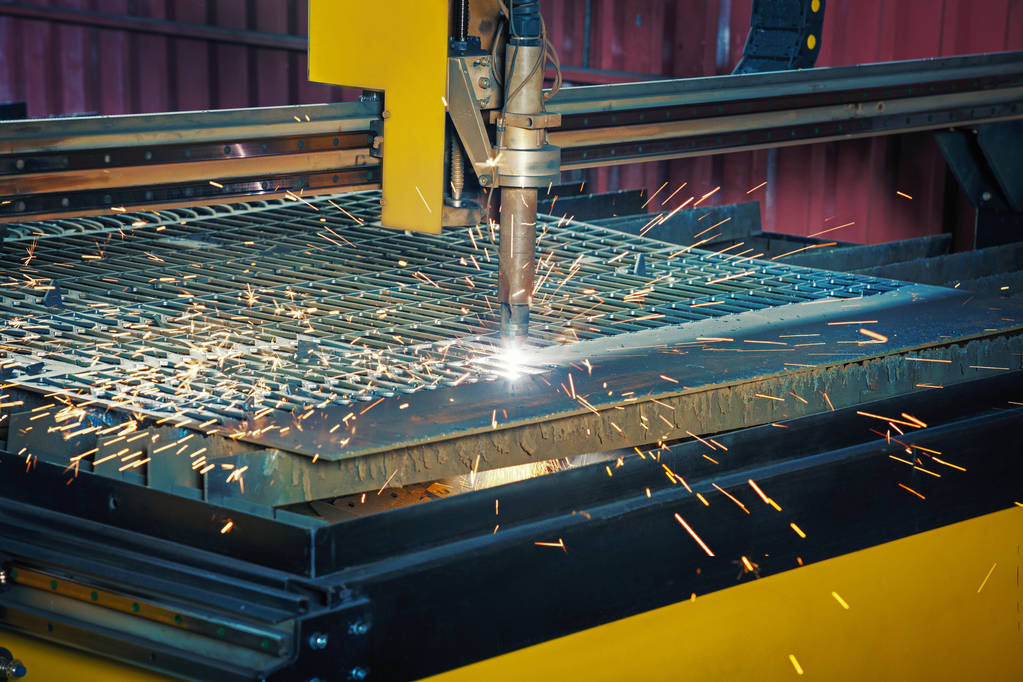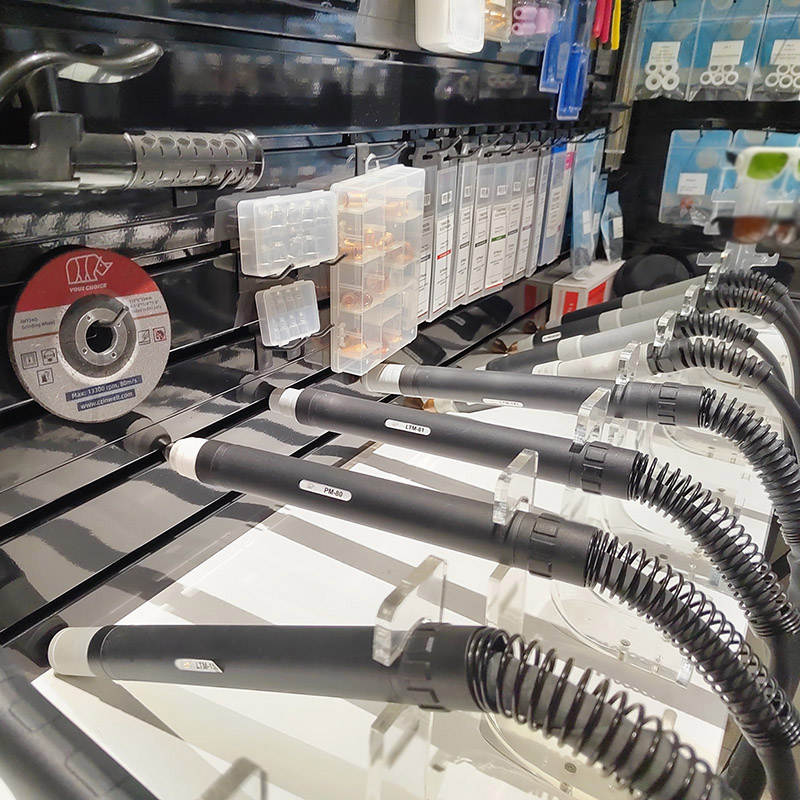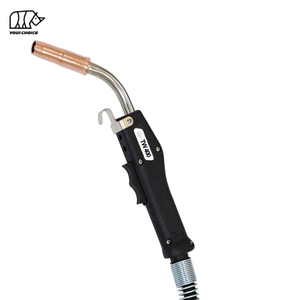In the realm of metal fabrication and industrial manufacturing, precision and efficiency are paramount. One technology that has revolutionized the way metals are cut is CNC plasma cutting. This advanced method utilizes a plasma torch to slice through electrically conductive materials with remarkable accuracy and speed. In this extensive guide, we will delve into the intricacies of CNC plasma cutting torches for metal, exploring their principles, components, advantages, applications, and more.
Understanding CNC Plasma Cutting
CNC plasma cutting involves the use of a computer-controlled torch to cut through electrically conductive materials such as steel, aluminum, brass, and copper. The term CNC stands for Computer Numerical Control, which means the cutting path is programmed and followed precisely by the machine. The plasma used in this process is a superheated, electrically ionized gas that can reach extremely high temperatures, enabling it to melt and cut through metal.
The Science Behind Plasma Cutting
Plasma is one of the four fundamental states of matter, alongside solid, liquid, and gas. When gas is heated to an extremely high temperature, it becomes ionized, transforming into plasma. This ionized gas is capable of conducting electricity and, when focused into a tight stream, can cut through metal. The plasma cutting process involves the following steps:
An electrical arc is initiated between an electrode inside the torch and the workpiece.
Compressed gas (such as air, oxygen, nitrogen, or argon) is forced through the nozzle. As it passes the arc, the gas becomes ionized and turns into plasma.
The focused plasma jet then melts the metal and blows it away, creating a clean cut.
Key Components of a CNC Plasma Cutting System
A CNC plasma cutting system comprises several essential components that work together to achieve precise and efficient cutting. These components include:
CNC Controller
The CNC controller serves as the central command unit of the plasma table. It interprets digital design files, such as G-code or DXF, and converts them into precise instructions that guide the movement of the plasma torch across the X, Y, and Z axes. This ensures accurate, repeatable, and automated cuts.
Plasma Torch
The plasma torch is the active cutting component of the machine. It houses a consumable electrode and nozzle that generate and shape the plasma arc. The design of the torch directly influences the cut quality, edge smoothness, and overall cutting precision. The torch delivers intense, focused heat to melt through metal.
Power Supply
The power supply is responsible for delivering the necessary electrical energy to produce a high-temperature plasma arc. It converts standard electricity into a high-current output, typically ranging from 40 to 400 amps. The amperage required depends on the type, thickness, and cutting speed needed for the specific metal being processed.
Gas Supply System
The gas supply system provides the compressed air or specialty gases used in forming the plasma arc. Clean, dry air is essential to prevent contamination and ensure consistent arc stability. The choice of gas affects the cut quality, speed, and material compatibility during the cutting process.
Motion System
The motion system physically moves the plasma torch along the programmed path. It consists of linear rails, stepper or servo motors, gear drives, and sometimes ball screws or rack-and-pinion systems. This setup ensures precise, smooth motion and translates the controller's digital instructions into accurate physical torch movement.
Cutting Table
The cutting table supports the metal workpiece during the cutting process. It is often made of replaceable steel slats to allow molten material to fall through. Advanced tables include water beds or downdraft ventilation systems that reduce heat, minimize warping, and capture sparks, fumes, and metal dust for a cleaner work environment.

How the CNC Plasma Cutter Works: Step-by-Step Process
The process of operating a CNC plasma cutter involves several clear and manageable steps:
Design the Cut File
The process begins with creating a digital drawing using CAD (Computer-Aided Design) software. This can be a new design or an imported file such as DXF or SVG. The design is then converted into machine-readable G-code using CAM (Computer-Aided Manufacturing) software. This code defines tool paths, cutting speed, and pierce points.
Load the Material
Once the design is ready, the appropriate metal sheet—such as steel, aluminum, or stainless steel—is placed onto the cutting table. It is essential to ensure the material lies flat, with no bends or warps, and is properly grounded. A clean, even surface ensures accuracy and prevents arc instability or incomplete cuts during operation.
Set Cutting Parameters
Before cutting begins, essential settings are input into the CNC controller. These include torch height, amperage, cutting speed, and gas type. Each parameter should match the material's properties, such as thickness and conductivity. For instance, thicker metals require slower speed and higher amperage for a clean, effective cut.
Start the Cutting Job
With the setup complete, the CNC controller initiates the cut. The torch follows the programmed path, maintaining proper height as it moves. A pilot arc strikes first, then the main plasma arc forms and begins cutting. The high-temperature plasma jet slices cleanly through the metal along the exact toolpath.
Finishing Up
After the cutting is finished, the part is removed from the table. Most cuts are clean, but minor finishing may be needed. You might need to grind off any slag, smooth the edges, or remove dross buildup. In most cases, CNC plasma cutting results in minimal cleanup compared to manual methods.
Advantages of CNC Plasma Cutting
CNC plasma cutting offers numerous advantages that make it a preferred choice in various industries:
Precision and Accuracy
CNC plasma cutting provides exceptional precision and accuracy, with cut accuracy of ±0.01 to 0.05 inches and kerf widths as narrow as 0.05 inches. This makes it ideal for intricate designs and tight tolerances.
Speed and Efficiency
CNC plasma cutting operates at faster speeds than traditional methods, with cutting speeds up to 500 inches per minute. Its high-speed cutting capability significantly increases productivity and reduces production time.
Versatility
CNC plasma cutting machines can handle various materials and thicknesses, from thin sheets of aluminum to thick steel plates. They are versatile tools suitable for different industries, including metal fabrication, automotive and aerospace manufacturing, construction, and even art and design.
Cost-Effectiveness
Compared to other cutting methods like laser cutting, CNC plasma cutting has a lower initial capital outlay. It is a cost-effective option for many applications, especially when dealing with conductive materials.
Applications of CNC Plasma Cutting
The versatility and efficiency of CNC plasma cutting make it suitable for a wide range of applications across different industries:
Manufacturing
In manufacturing, CNC plasma cutting is used to produce parts and components for various products. Its precision and speed enable the creation of complex shapes and designs with minimal waste.
Construction
In the construction industry, CNC plasma cutting is employed to cut structural steel and other metal components used in building structures. Its ability to handle thick materials makes it ideal for this application.
Automotive and Aerospace
CNC plasma cutting is utilized in the automotive and aerospace industries for cutting body parts, frames, and other metal components. The precision and quality of the cuts ensure the integrity and performance of these critical parts.
Art and Decor
Artists and designers use CNC plasma cutting to create custom metal artworks, sculptures, and decorative pieces. The technology allows for the realization of intricate and detailed designs that would be difficult to achieve with manual methods.
Factors Affecting CNC Plasma Cutting Performance
Several factors influence the performance and quality of CNC plasma cutting:
Material Type and Thickness
The type and thickness of the material being cut affect the cutting parameters, such as amperage, cutting speed, and gas selection. Different materials have varying conductivity and melting points, which impact the cutting process.
Gas Selection
The choice of gas used in plasma cutting plays a crucial role in determining the cut quality and efficiency. Common gases include air, oxygen, nitrogen, and argon. Each gas has specific properties that affect the plasma arc's stability, heat, and cutting performance.
Torch Design and Nozzle Height
A well-designed torch and precise control over nozzle height are essential for achieving accurate cuts. Height control systems adjust in real-time based on sensor feedback to maintain a consistent distance from the material. This helps reduce the width difference between the upper and lower cuts, resulting in a more uniform and precise cut.
Machine Calibration
Regular calibration of the CNC plasma cutting machine is vital for maintaining precision. This includes checking axis alignment and table leveling to ensure consistent and accurate cuts across different projects. Proper calibration helps achieve desired outcomes, maintains the machine's performance, and extends its operational life.
Maintenance and Safety Practices
Proper maintenance and adherence to safety practices are crucial for ensuring the longevity and optimal performance of CNC plasma cutting equipment, as well as protecting operators from potential hazards.
Maintenance Tips
Like any industrial tool, CNC plasma cutters require regular care to function at their best. Maintenance tasks include inspecting and replacing worn consumables (nozzles, electrodes), cleaning the torch regularly, checking cables and connections, lubricating motion systems, and cleaning filters and maintaining the gas supply. Regular maintenance extends the lifespan of the equipment and ensures consistent cutting quality.
Safety Practices
Operating a CNC plasma cutter involves certain risks, such as exposure to intense light, heat, and fumes. To ensure safe operation, operators should wear appropriate protective gear, including gloves, safety glasses, and a welding helmet. Additionally, working in a well-ventilated area and following proper procedures for handling and storing gases are essential for safety.
Comparison with Other Cutting Methods
CNC plasma cutting has its unique advantages and limitations when compared to other cutting methods such as laser cutting and waterjet cutting:
Laser Cutting
Laser cutting offers higher precision and can handle both conductive and non-conductive materials. However, it is generally slower and more expensive than CNC plasma cutting, especially for thicker materials. CNC plasma cutting is often preferred for its speed and cost-effectiveness when working with conductive metals.
Waterjet Cutting
Waterjet cutting uses a high-pressure stream of water mixed with an abrasive substance to cut through materials. It can cut a wide range of materials, including non-conductive ones, and produces minimal heat-affected zones. However, waterjet cutting is slower than CNC plasma cutting and has higher operational costs due to water and abrasive consumption.

Choosing the Right CNC Plasma Cutting Torch
Selecting the appropriate CNCplasma cutting torch depends on various factors, including the specific cutting requirements, material types, and thicknesses. When choosing a plasma torch, consider the following:
Cutting Capacity
Ensure the plasma torch has sufficient cutting capacity to handle the thickest material you will be working with. The torch's amperage rating indicates its cutting capability, with higher amperage torches capable of cutting thicker materials.
Precision and Accuracy
Consider the precision and accuracy requirements of your projects. Some plasma torches offer advanced features and controls that enhance cut quality and consistency, making them suitable for applications demanding tight tolerances.
Durability and Consumables
Evaluate the durability of the plasma torch and the availability and cost of consumables such as electrodes and nozzles. Durable torches with long-lasting consumables can reduce downtime and maintenance costs.
Integration with CNC System
Ensure the plasma torch is compatible with your CNC system and can be seamlessly integrated into your existing setup. Proper integration ensures smooth communication between the controller and the torch, resulting in precise and efficient cutting operations.
The Future of CNC Plasma Cutting
As technology continues to advance, CNC plasma cutting is likely to evolve further, offering even greater precision, speed, and efficiency. Future developments may include improved torch designs, enhanced plasma generation techniques, and more sophisticated CNC control systems with advanced features and capabilities. Additionally, the integration of automation and artificial intelligence could further optimize the cutting process, reducing human intervention and improving overall productivity.
Conclusion
CNC plasma cutting has become an indispensable technology in modern metal fabrication and industrial manufacturing. With its ability to cut through electrically conductive materials with remarkable precision and speed, it offers numerous advantages over traditional cutting methods. By understanding the principles, components, and operation of CNC plasma cutting torches, professionals can leverage this powerful technology to achieve accurate and efficient cutting results in various applications. As the industry continues to advance, CNC plasma cutting is poised to play an even more significant role in shaping the future of metalworking.
Whether you are a manufacturer, fabricator, artist, or hobbyist, investing in a CNC plasma cutting system can significantly enhance your capabilities and productivity. Embracing this technology opens up a world of possibilities for creating intricate designs, complex components, and high-quality metal products with ease and efficiency.
English
简体中文
العربية
Français
Русский
Español
Português
Deutsch
italiano
日本語
한국어
Nederlands
Tiếng Việt
ไทย
Polski
Türkçe
ភាសាខ្មែរ
Bahasa Melayu
Filipino
Bahasa Indonesia
magyar
Română
Čeština
Монгол
қазақ
Српски
हिन्दी
فارسی
Slovenčina
Slovenščina
Norsk
Svenska
українська
Ελληνικά
Suomi
Latine
Dansk
বাংলা
Hrvatski
Afrikaans
Gaeilge
Eesti keel
नेपाली
Oʻzbekcha
latviešu
Azərbaycan dili
Беларуская мова
Bosanski
Български
ქართული
Lietuvių
































